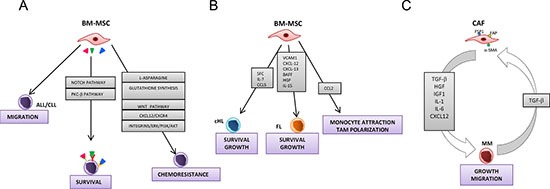Figure 4. Models for the role of bone marrow-mesenchymal stromal cells and cancer activated fibroblasts in hematological malignancies.

Panel A depicts the interactions between bone marrow-mesenchymal stromal cells and acute lymphocytic leukemia (ALL) and chronic lymphocytic leukemia (CLL) cells. BM-MSCs promote migration, survival and chemoresistance of ALL/CLL cells. Induction of survival by BM-MSCs is mediated by different pathway including Notch and PKC-β. BM-MSC protect ALL/CLL cells from cytotoxic agents through various mechanisms such as the synthesis of L-asparagine and glutathione, and the involvement of Wnt, ERK 1/2, PI3K/Akt signaling pathways and CXCR4/CXCL12 axis. Panel B shows the interactions between BM-MSCs and classical Hodgkin lymphoma (cHL) and follicular lymphoma (FL) cells. BM-MSCs support the growth and survival of lymphoma cells by different molecules including stem cell factor (SCF), IL-7, IL-15, CCL5, CXCL-12, CXCL-13, BAFF, Hepatocyte growth factor (HGF). FL-associated MSCs overexpress CCL2 that attracts monocyte and stimulates their polarization towards a tumor-associated macrophage (TAM) phenotype. Panel C depicts the interplay between multiple myeloma (MM) cells and CAFs. MM activate and recruit fibroblasts via the secretion of TGF-β. In turn, CAFs secrete different growth factors and cytokines that stimulate growth and migration of MM cells.
